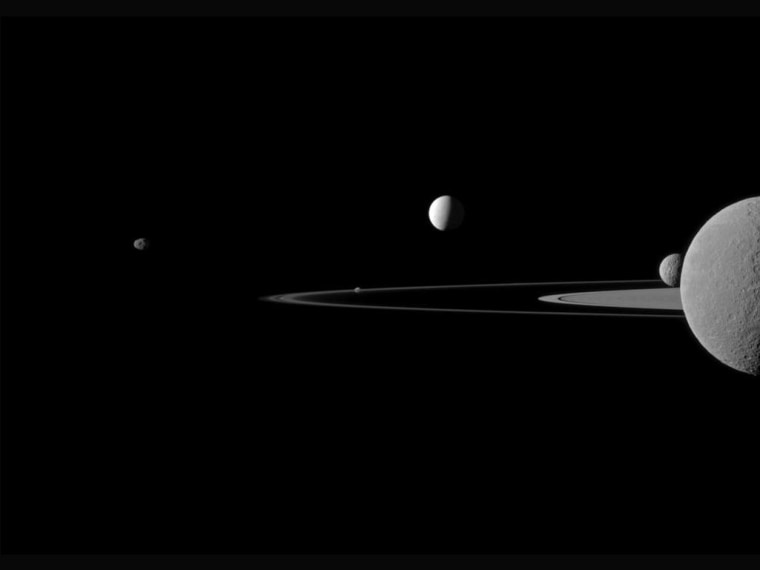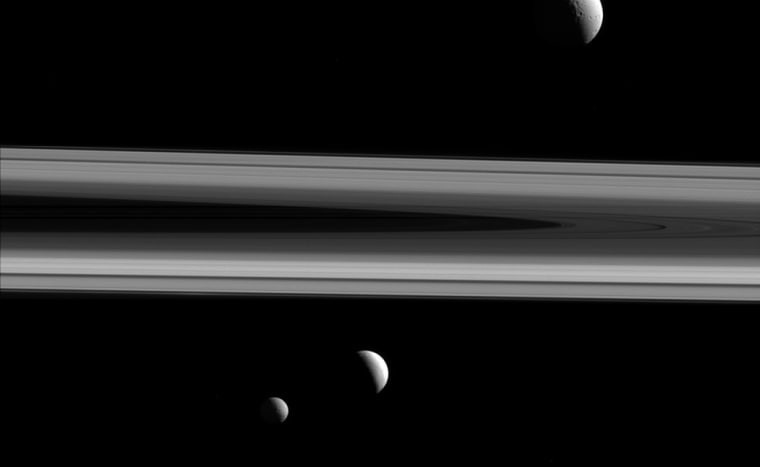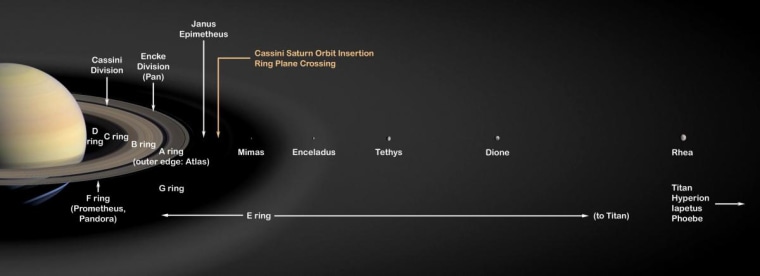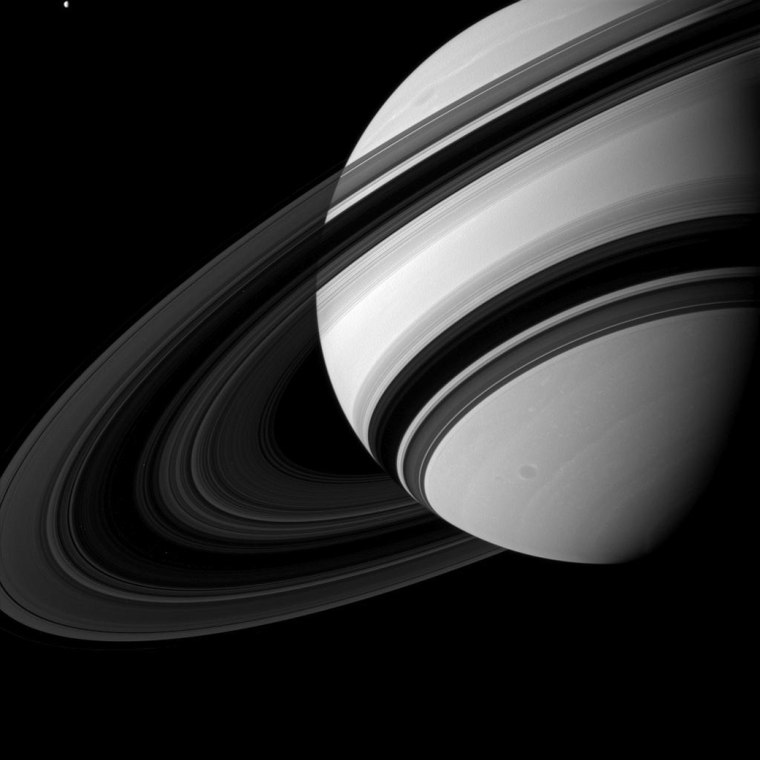The formation of the solar system is still a very open question in astronomy. Some things we understand, some things we don't. New work by astronomers proposes that Saturn's rings and moons may have formed billions of years after the Sun burst into light and Saturn and its brethren took shape.

Saturn's rings were first discovered by Galileo in 1610, but the first moon wasn't detected until 1655, when Dutch astronomer Christiaan Huygens took advantage of advances in telescope technology to study the planet in more detail. It was originally assumed that the rings (and moons) formed simultaneously (astronomically speaking) along with the entire solar system. However, evidence to the contrary is now being found. In 2012, astronomers in France found that some the moons closer in are actually spiraling slowly away from Saturn.

Building on that research, astronomers at SETI and the Southwest Research Institute have used computer simulations to dynamically model the evolution of Saturn's inner moons. The results suggest that moons beyond the orbit of Rhea are likely the oldest, but the ones closer in are younger and their orbits around Saturn haven't had as much time to evolve - i.e., their current locations are not far from where they likely formed. Ages for these moons based on these assumptions come out to less than 100 million years old (which likely applies to the rings as well).

Lead researcher, Matija Cuk, summarized it thusly:
"Our best guess is that Saturn had a similar collection of moons before, but their orbits were disturbed by a special kind of orbital resonance involving Saturn's motion around the Sun. Eventually, the orbits of neighboring moons crossed, and these objects collided. From this rubble, the present set of moons and rings formed."
This means that while dinosaurs were roaming the Earth during the Cretaceous Period, Saturn was ringless! Mind. Blown. Those dinosaurs will never know the beauty they missed.
Here's some more geek from the week:
- How to mark the start of Spring by the science of life instead of the stars.
- Birds in the Everglades strike up an unlikely alliance with alligators. [VIDEO]
- A small extinct bat has been found to be only the second land mammal native to Hawaii.
- The smallest number of genes a living organism can get away with is... 471?
- A library of dead plants is way more useful than you might think.
- Speaking of libraries, this one at Harvard catalogs physical samples of pigments in the world.
- Beautiful visualization of what part of the world is across the ocean from you on any given coast.
- Fascinating stories from people whose names cause computer algorithms to freak out.
- This DIY shows you how to use household items to listen to records through your teeth.
- Your moment of zen: watch 6,000 matches burn simultaneously . [VIDEO]
- NASA's Cassini Mission continues to reveal more and more, this time a new map of Saturn's moon Titan.
- Detailed maps of polar ice on the Moon reveal three billion years ago, the Moon's axis shifted significantly.
Keep on geeking!
@Summer_Ash, In-house Astrophysicist
